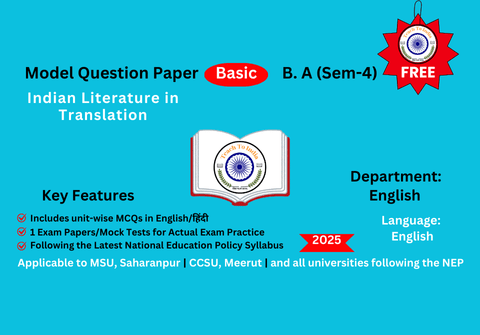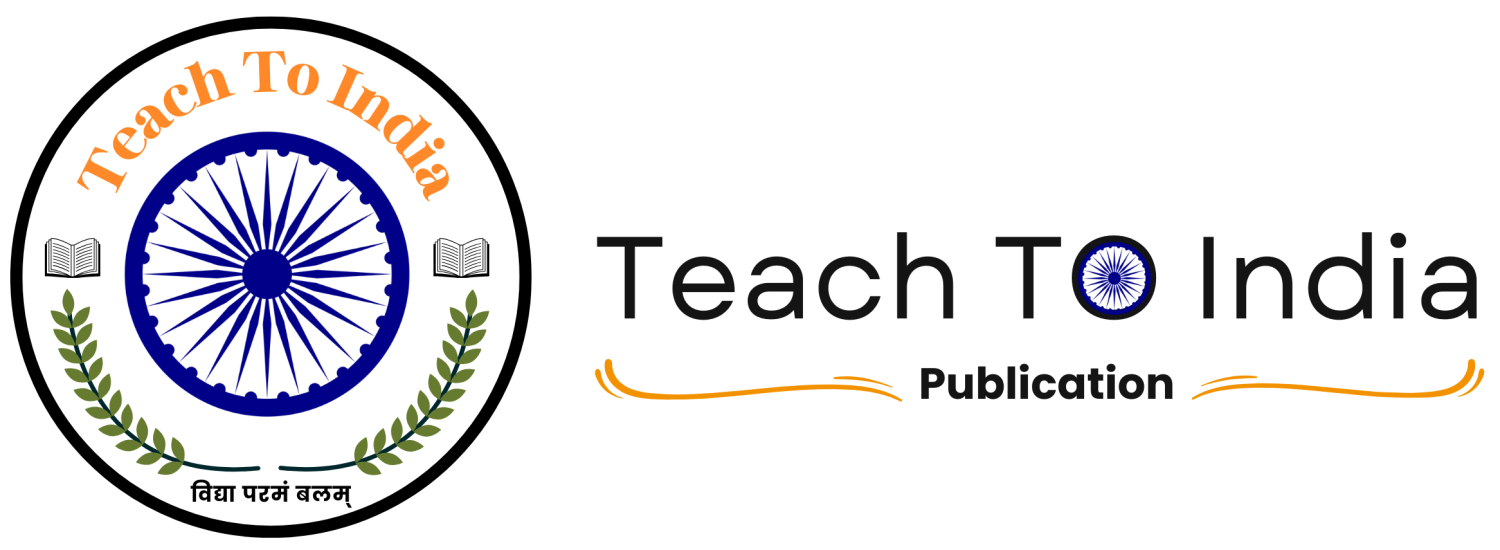Indian Literature in Translation
- Description
- Curriculum
- Reviews

Model Question Paper
Indian Literature in Translation
Key Features | मुख्य विशेषताएँ
- Bilingual Model Paper | द्विभाषी मॉडल पेपर
- Enough MCQ for Practice | अभ्यास के लिए पर्याप्त MCQ
- Exam Practice Paper with Mock Tests | मॉक टेस्ट के साथ परीक्षा अभ्यास पत्र
- Latest Syllabus as per NEP | NEP के अनुसार नवीनतम पाठ्यक्रम
- Designed by Experts | विशेषज्ञों द्वारा तैयार किया गया
The given MCQs cover only 10% of the syllabus | दिए गए बहुविकल्पीय प्रश्न केवल 10% पाठ्यक्रम को कवर करते हैं।
To cover 100% of the syllabus with summaries, upgrade to our Advanced Model Paper.| पूरा सिलेबस और सारांश कवर करने के लिए हमारा एडवांस मॉडल पेपर जॉइन करें। Join Advanced Model Paper
|
Program Class: DIPLOMA / BA |
Year: Second |
Semester: Fourth |
||
|
Subject: English |
||||
|
Course Title: Indian Literature in Translation |
||||
|
Course Learning Outcomes: After completing this course, the students will be able to: · Understand the history of translation and various forms of translations. · Acquaint the translation tools like computer and mobile in the process of translation. · Attain accessibility to regional literary forms. · Contextualize the texts of Jaishankar Prasad, Amrita Pritam, and Tagore in their respective social and cultural milieu. · Develop an insight into the philosophy of Kabir through his verses. · Gain a historical vision of the partition trauma and the contemporary issues of the tribal people through the writings of Bhisham Sahni and Mahasweta Devi. · Enhance job opportunities by fostering translation skills · Understand Indian consciousness and review the past through translated texts. |
||||
|
Credits: 06 |
Core Compulsory |
|||
|
Max. Marks: –25+75 |
Min. Passing Marks: 33 |
|||
|
Unit |
Topics |
|||
|
I |
1. Introducing Translation: A Brief History and Significance of Translation in a Multilinguistic and Multicultural Society like India. 2. Literal translation Versus Free translation. |
|||
|
II |
Using Tools of Technology for Translation: Computer / Mobile Translation, Software or Translating Different Kinds of Texts with Differing Levels of Complexity and for Transliteration. |
|||
|
III |
Fiction Rabindranath Tagore, The Home and the World, tr. Surendranath Tagore OR Amrita Pritam, The Revenue Stamp. |
|||
|
IV |
Poetry Jayshankar Prasad, *Aansu (The Garden of Loneliness), tr. Charles S.J. White (Delhi: Motilal Banarasidas, 2006) OR Kabir: *The English Writings of Rabindra Nath Tagore (1994, Vol.1 Ed. Sisir Kumar Das, Sahitya Akademi, Verses- 1,2, 8,12, 53, 69) |
|||
|
V |
Short Fiction 1. Bhisham Sahni- Amritsar Aa Gaya OR 2. Mahasweta Devi- The Hunt |
|||
|
VI |
Drama 1. Mohan Rakesh- *Adhe Adhure (Halfway House) OR 2. Vijay Tendulkar- *Kanyadan |
|||
|
VII |
Translation Practice 1. One Passage for Translation (Hindi to English) OR 2. One Stanza for para phrasing (Hindi to English) |
|||
|
VIII |
Translation Practice 1. One Passage for Translation (English to Hindi) OR 2. One Stanza for para phrasing (English to Hindi) |
|||
-
1Unit 1: Indian Literature in Translation
-
2Unit 2: Indian Literature in Translation
-
3Unit 3: Indian Literature in Translation
-
4Unit 4: Indian Literature in Translation
-
5Unit 5: Indian Literature in Translation
-
6Unit 6: Indian Literature in Translation
-
7Unit 7: Indian Literature in Translation
-
8Unit 8: Indian Literature in Translation







